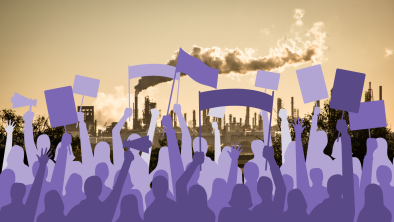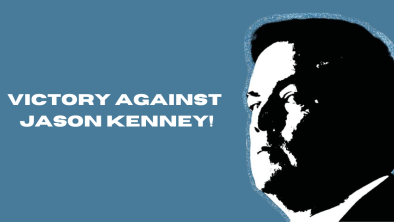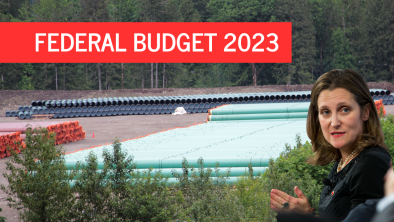B.C.'s clean climate plan targets natural gas and oil sector
Vancouver Sun
B.C.’s new greenhouse gas-emission target calls for a 40-per-cent reduction by 2030 over 2007 levels, a decrease of 24 million tonnes of carbon dioxide equivalents.
B.C. Premier John Horgan unveiled details Wednesday of the NDP’s long-awaited plan to reduce greenhouse gas emissions, calling for aggressive reductions targeted at industry, transportation and housing.
The reduction estimates outlined would bring the province 75 per cent of the way to meeting its 2030 target. The remaining 25 per cent of the reductions are to be rolled out in the next 18 to 24 months.
The province will enact regulations to drive the reductions — including copying the federal government’s 45 per cent methane emission reduction — and come up incentives.
The costs of the climate plan, which includes continuing rebates to low-income earners, as much as $135 annually to adult, will be outlined in next year’s budget normally delivered in February.
British Columbia has announced its plan to fight climate change while it accommodates the carbon polluting liquefied natural gas industry.The plan includes previously announced increases to the carbon tax, which is $35 a tonne of carbon and will rise to $50 a tonne by 2021. The carbon tax adds costs to a tank of gas and can trickle down in increased costs of consumer goods. How the plan might effect the cost of B.C. households in other ways is not yet clear.
Horgan pointed to the back-to-back wildfire seasons that ravaged British Columbia as a symptom of climate change that pointed to a need for action.
“British Columbia is changing — this special place we depend on, we call home. What steps can we take together to make sure those changes are not devastating but in fact can be managed and we can adapt,” said Horgan, imploring everyone to buy into the plan.
“(This plan) will lower greenhouse gas emissions, reduce climate pollution and move our province and our economy to a low carbon future where there will be more jobs and more opportunity for all British Columbians,” he said.
There is enough “clean” electricity available until after 2030 to feed the plan but then more sources would be needed.
Putting forward a bold carbon-reduction plan was necessary for the NDP to satisfy the Green party, which provided support to put Horgan’s minority government in power after 16 years of B.C. Liberal rule.
“This is about sending a signal to the broad market in British Columbia, to the international community, that B.C. is going to rise to the challenge. We welcome business in B.C. but that business will be clean business,” said Green party Leader Andrew Weaver, a former University of Victoria climate scientist.
B.C.’s new greenhouse gas-emission target calls for a 40-per-cent reduction by 2030 over 2007 levels, a decrease of 25.4 million tonnes of carbon dioxide equivalents. The latest B.C. numbers, from 2015, put emissions at 63.3 million tonnes, a little less if carbon offsets are included.
The largest chunk of reductions unveiled Wednesday are targeted at industry, including electrifying extraction and production of the natural gas and oil sector in northeast B.C., which accounts for 20 per cent of methane emissions.
The natural gas extraction and production sector largely uses natural gas to power plants and pipelines. They will be able to switch to clean electricity with the extension of transmission lines, for which the B.C. government expects the federal government to contribute.
The B.C. government will provide about $240 million a year in incentives — through rebates to industries with low carbon intensity and a fund to which industry can apply to for projects to lower carbon emissions.
In the housing sector, Horgan’s government wants to see retrofits to existing housing, both public and private, including through incentives such as for heat pumps. By 2032, all new buildings must be net-zero energy, meaning they produce the power they need, perhaps through technologies such as solar panels and extracting heat from waste water.
The plan also includes a recently announced requirement that by 2040 all new vehicles will be zero-emission. The idea is to push the change through incentives, such as rebates to buy electric vehicles and install more charging stations in the province. The province also will increase the low-carbon fuel standard to 20 per cent by 2030, the same as California.
Environmental groups were pleased with the plan.
The Wilderness Committee said it was optimistic B.C.’s new climate plan will put the province on track to meet its emissions targets while laying the groundwork for increased ambition on climate action.
“It’s taken almost a year, but the Green-supported NDP government has started to head in the right direction,” said climate campaigner Peter McCartney.
Greg D’Avignon, president and CEO of the Business Council of B.C., said the tools within the plan support a low-carbon industrial strategy and position B.C. businesses and the province to be a supplier of choice for international markets seeking lower-carbon intensive energy, commodities and other inputs for their expanding economies.
However, the Canadian Association of Petroleum Producers had concerns, with spokesman Geoff Morrison saying it is important for the industry to stay globally competitive, particularly when natural gas and oil prices are depressed.
twitter.com/gordon_hoekstra
Here are some of the goals in the government’s plan:
— The strategy will require an additional 4,000 gigawatt hours of electricity over current demand, equal to increasing B.C. Hydro’s current system-wide capacity by about eight per cent, or about the demand by consumers in Vancouver.
— By 2032, new buildings will be 80 per cent more efficient than homes built today. Emission from buildings will drop by 40 per cent, the government says.
— Fossil fuel use for transportation will drop by 20 per cent by 2030, spurred by 30 per cent of sales of new light-duty cars and trucks being zero-emission vehicles.
— By 2025, methane emissions from the natural gas sector will drop by 45 per cent.
— Ninety-five per cent of organic waste from agriculture, industry and municipalities will be diverted from landfills and turned into other products by 2030.
— Seventy-five per cent of landfill methane will be captured by 2030.
— The legislated target for 2030 is a reduction of 25.4 megatonnes of greenhouse gas from the 2007 baseline.
— The province set new targets for greenhouse gas emissions in May, committing to reductions of 40 per cent by 2030, 60 per cent by 2040 and 80 per cent by 2050.
— B.C.’s price on carbon increased this year to $35 per tonne and will go up $5 per year until 2021 in an effort to encourage lower emission alternatives
with files from The Canadian Press
To read original article click here.


